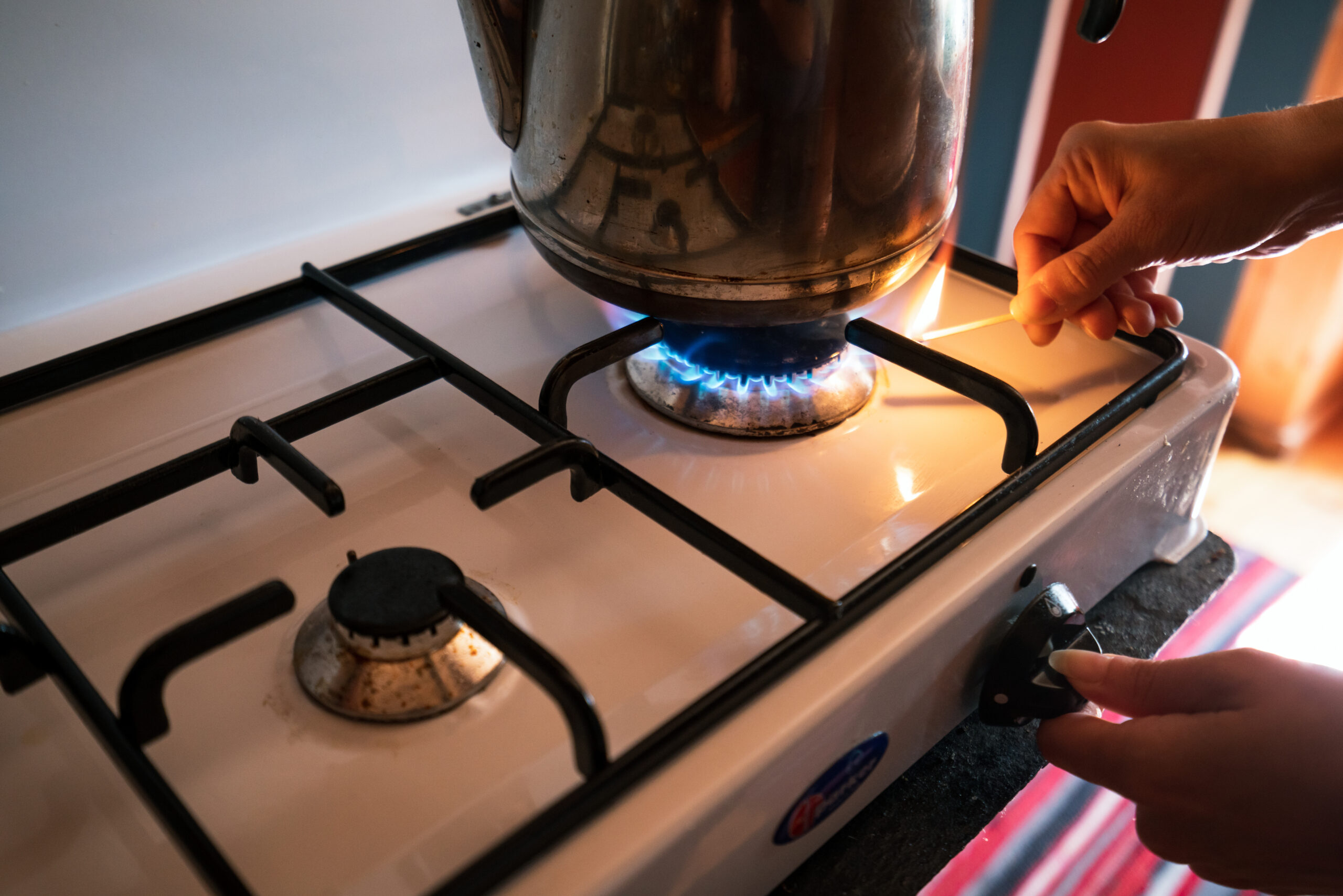New study reveals severity of indoor air pollution from gas cooking
The largest-ever study of European homes with gas stoves finds indoor air pollution at levels that pose increased health risks. Experts say a switch to electric appliances is necessary.

Cooking with gas leads to indoor air pollution that breaches recommended levels and at times even exceeds guideline levels set by the World Health Organization for outdoor air quality, according to a new study of European homes.
Nitrogen dioxide (NO2) levels in homes with gas stoves were nearly twice as high in kitchens, living rooms, and bedrooms, compared to homes that cook with electric stoves. The study was commissioned by energy efficiency group CLASP and conducted by the Netherlands Organisation for Applied Scientific Research (TNO). It is the largest-ever study looking at gas stoves in European homes.
NO2 is a pollutant that exacerbates respiratory ailments, can reduce lung function, and increase asthma attacks, particularly in children. The World Health Organization estimates that children living in homes with gas stoves are at a 20 percent increased risk of suffering from respiratory illnesses.
“Our research reveals the severity of air pollution caused by gas cooking appliances in homes across Europe,” Nicole Kearney, CLASP Europe Director, said in a statement. “Governments must protect public health, tackling air pollution at the source and supporting the transition to cleaner cooking.”
The researchers sampled 247 homes across seven countries. The study found that indoor air pollution was more intense the longer the gas appliance was in use. And about a quarter of homes with gas had indoor air pollution that breached EU and UK hourly NO2 limits for outside air quality.
An estimated 32.5 percent of homes in the EU use gas appliances for cooking.
Gas Outlook has previously reported on the growing body of evidence that points to the human health harms from gas stoves. Gas stoves leak a host of toxic chemicals and even cancer-causing pollutants, such as benzene. Other studies have found levels of benzene in homes with gas stoves at levels that would be equivalent to second-hand smoke. Gas stoves can even leak hazardous air pollutants when they are turned off.
Other gas appliances are also huge sources of outdoor air pollution. In California, estimates show that gas furnaces and gas water heaters emit four times as much nitrogen oxide pollution as all of the state’s gas-fired power plants combined, and two-thirds as much as the state’s passenger cars.
But when concentrated indoors during cooking, the pollution increases health risks for residents with gas stoves.
“Gas hobs and ovens are a major source of indoor air pollution, including NO2, which can both exacerbate existing health conditions and potentially lead to new respiratory illnesses,” Professor Frank Kelly of Imperial College London said in a statement. “For children with asthma, the presence of gas cooking appliances can intensify their symptoms. Removing these appliances from our homes will improve indoor air quality and mitigate potential risks to public health.”
